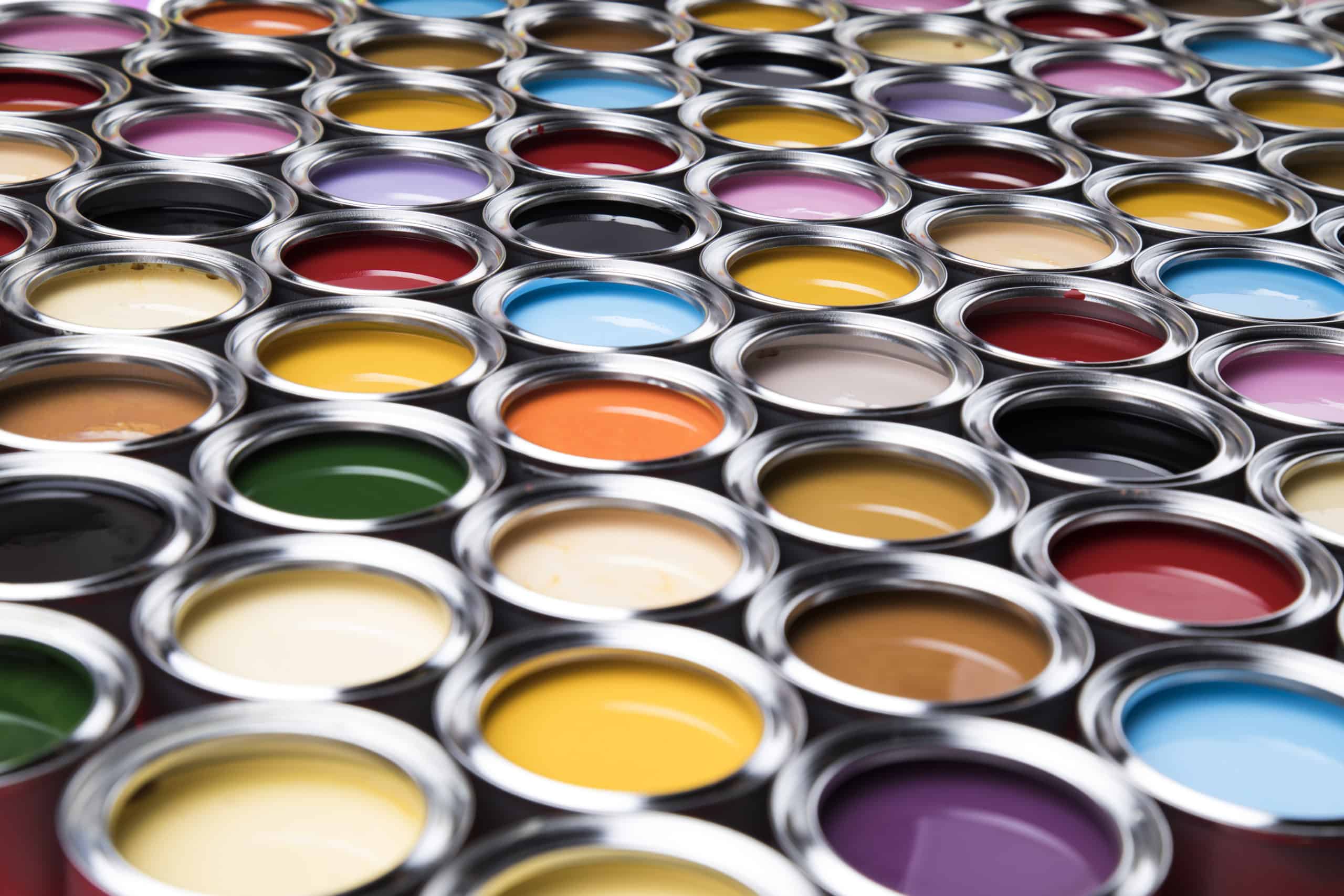Walking into a hardware store to buy paint can be confusing for most consumers. There can be at least six different types of paint for the same color. Not to mention all of the paint brands and different applications for each type of paint.
So, what do you look for? How do you choose? You need to know more than the color you want. Knowing what the labels mean on a paint can will help you.
What to Know about Paint

There are two basic types of paint to choose from, water-based and oil-based. Latex and acrylic paints are water-based, while alkyd paints are oil-based. Both interior paints and exterior paints come in both types. Water-based paints are preferred for indoor painting.
For exterior paint, oil-based is better at resisting dirt. However, water-based latex paint is used for the outdoors because it is as durable as oil-based paint. These exterior paints can handle humidity, temperature changes, and other outdoor factors. There are additives in exterior paints that help them last longer in bad weather. Some include resistance to cracking, protection from UV rays, mildewcide, or dirt resistance.
What’s the Difference in Paint Types?
The chemical makeup of paint makes a big difference in its performance. Some paints are simply created for color surfacing and absorption. Other paints are mixed with ingredients that help it to withstand the outside elements and last longer.
Differences begin to emerge when you look at paint's other components: pigment, binders, and liquids.
Pigment
The pigment is what provides a can of paint with its color. Interior paints may contain organic pigments for color. Some of these organic pigments will fade if used on an exterior surface. That’s why exterior paint formulas avoid using these pigments.
Binders
Binders are used to bind the pigment together as well as provide adhesion to the painted surface. Exterior paints need more help combatting the effects of the environment; therefore, additives are used to help resist such effects. Interior paint binders may offer better resistance from abrasion.
Solvents
Solvents, or liquids, are the vehicle for allowing the paint to get from the can to the surfaces. The type of liquid differs depending on the type of paint. Combining the pigments and binders with the liquids creates the paint coating you see in the paint can. For latex paints the liquid is water, and oil-based paints usually contain a paint thinner.
Exterior Paint
One large difference between interior and exterior paint is that exterior paint contains more toxic chemicals. Exterior paint contains fungicides, mildewcides, and UV blockers to help it block moisture and resist fading. Using exterior paints indoors will expose you to harmful chemicals. That is why exterior paint is not used inside.
Interior Paint
Interior paint applies thinner and dries faster. This nature of interior paint gives it an inherent weakness when used outside.
Standard interior paint needs a surface that has been prepared to bond correctly. In many cases, a primer must be used to give interior paint a surface to bond with when it dries. Some interior paints come with a primer component mixed in to make their application a one-step job. Interior paint is water-based, so rain and moisture will quickly eat away at interior paint.
The Labels on a Paint Can
Much has changed in the manufacturing of paint. The chemistry behind the paint used today ensures it is made for its intended use. Both manufacturers and professional painters recommend you use paint as specified on the label. It is helpful to understand the information on the paint can label.
- Finish. Paint comes in a few finishes that include flat, eggshell, satin, glossy, and semi-gloss.
- Tint base. This is the paint used to change the color or tint of the paint.
- Volume. Most paint volumes include quarts and gallons.
- Name of Paint. Paint manufacturers name the paints, and some are included in a specific line with other complementary paint colors.
- Colorant: Codes are used to specify the colorant used. Some paint cans list the formula or recipe for the colorants.
- Interior or Exterior: Let you know if the paint is manufactured for interior or exterior use.
- Line of Paint: Some paint brands have a collection of colors that coordinate together. They will introduce a line of paint for the new year, season, or if they’ve partnered with another brand.
Trusted Painting Professionals
If you’re shopping for paint and are unsure of which type to buy, ask the salesperson. They should be knowledgeable on the proper paints for your project and can recommend the right ones to use.
Even better, contact Walla Painting to complete your house painting project. We are experts at choosing the proper finish and we guarantee outstanding results. We never cut corners or use inferior paint products, so your home will look great for years.
REQUEST A QUOTE
The process is simple, it will only take a moment
Check out our recent articles
Thinking of giving your kitchen a fresh, new look without breaking the bank? Painting your kitchen cabinets could be an inexpensive way
Picking the right paint color? It’s way more involved than just picking a hue on a swatch and calling it a day.
Painting a kitchen can transform a tired and dated space into a rejuvenating area where family and friends gather to create meals
